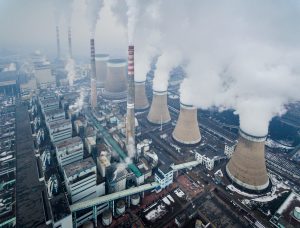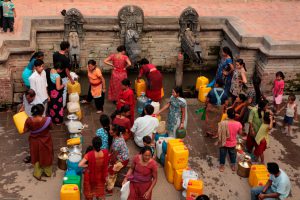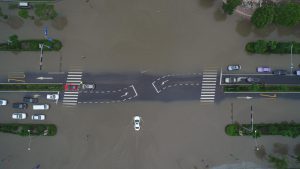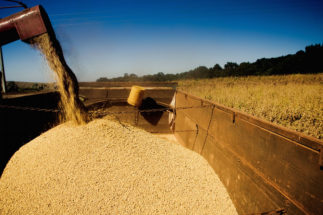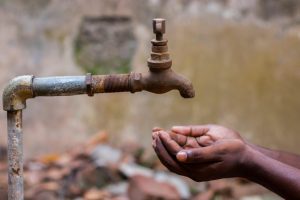In the north-eastern corner of India, the Himalayan state of Arunachal Pradesh was all set to resume its hydropower project building spree when the Covid-19 pandemic arrived and the country went into lockdown. With Chief Minister Pema Khandu issuing a warning to anyone opposing any dam building, work may well start as soon as the lockdown is lifted and construction resumed.
Khandu said on February 11 that the state has the capacity to produce over 70,000 MW of hydropower “if all resources are developed properly.” In the same speech, the Chief Minister – who is from the same Bharatiya Janata Party that is in power at the centre – described any opposition to development projects as “anti-national”, and warned that he had already instructed the intelligence bureau to act against any official found “misguiding” people.
On the same day, Deputy Chief Minister Chowna Mein held a meeting with hydropower developers and members of the state government’s hydropower department “to understand the issues hampering implementation of allotted projects.” He noted that the state is committed to provide assistance to hydropower investors and directed the commissioners working on hydropower to provide necessary cooperation.
The rocks are fragile, they are soft rocks and dam building in these geological conditions is risky even considering low-intensity earthquakesB.P. Duarah of the Department of Geology, Gauhati University
Another indication that dam building will soon restart in earnest was India’s central Ministry of Environment, Forests and Climate Change (MoEFCC) giving the 2,880 MW Dibang hydro project Stage II approval for forest clearance despite strong opposition by locals. With this approval, the state government can issue an order to change the classification of designated forest land and divert it for the project. Khandu said in his February 11 speech that he had persuaded locals to withdraw their opposition.
There are two hydropower projects under construction in Arunachal Pradesh now, the 600 MW Kameng project on the Bichom and Tenga rivers, and the 2,000 MW Subansiri Lower Hydroelectricity Project. All three rivers are tributaries of the Brahmaputra.
See: Mega hydel project in Himalayas steamrollers objections
According to details collated from the MoEFCC website, currently 169 hydropower projects are proposed to be built in Arunachal Pradesh. The number excludes 20 projects that are proposed to be dropped.
The projects are located across the basins of rivers like Tawang, Kameng, Subansiri, Siang, Dibang, Lohit and others, all in the basin of the transboundary Brahmaputra river.
As of December 2019, the state had hydropower plants totalling 515 MW capacity in operation, according to a hydro-development report by the Central Electricity Authority (CEA). Since then at least 300 MW have been added, 2,600 MW are under construction and 18,578 MW more have been cleared by the CEA and are pending construction.
The MoEFCC and CEA lists do not match because “MoEFCC lists only those projects that have applied for environmental clearance (EC),” said Shripad Dharmadhikary, founder of Manthan Adhyayan Kendra, a research centre that analyses water and energy issues in India. CEA lists projects which are in the various stages of investigation or concurrence by the CEA.
For example, in the CEA list, Arunachal Pradesh has 21 projects in Survey and Investigation (S&I) phase. These will go to the MoEFCC only when the S&I phase is completed. The CEA list also has 43 projects in the category “yet to be allowed by the state for development.” These are projects that are expected to be taken up by the state government and allotted to developers. The developers will then apply for EC – that is the stage when these projects will get on to the MoEFCC list.
“So the CEA list is more comprehensive; the MoEFCC list is its sub-set,” Dharmadhikary explained.
Concerns – economic, ecological and seismic
While the state government has decided to go ahead with hydropower development, the worries will not go away. Speaking about the purpose of hydropower, B.P. Duarah of the Department of Geology, Gauhati University told thethirdpole.net, “Almost all hydropower stations are peaking stations, meaning they produce the additional electricity that is required during peak hours and thermal power stations are base stations that produce power continuously.”
In the present power scenario in India, hydropower stations can make a profit only if they sell power during the peak hours between 6 pm and 10 pm. So most hydropower station managers keep their tunnel inlets closed for 20 hours every day. This means that for 20 hours a day, there is hardly any water flowing downstream, while it all comes in a rush during the other four hours. Very few aquatic animals or plants can survive this huge change in water flow.
There is also the fundamental question on whether hydropower projects can make a profit if they can sell power profitably only for four hours a day. Worries about this – as well as about the difficult terrain and local opposition – has led to many private firms withdrawing from hydropower development in Arunachal Pradesh over the past few years.
See: Private dam builders back out of Brahmaputra dams
Then there is the question of dam safety in a highly earthquake-prone zone. Arunachal Pradesh is categorised as Zone V (at maximum risk) in the mapping of seismic zones in India. The August 15, 1950 earthquake measured 8.6 on the Richter scale, and killed at least 4,800 people and devastated north-eastern India as well as a large part of Tibet had its epicentre at the Mishmi hills in Lohit district of Arunachal Pradesh.
The entire region is highly vulnerable to earthquakes. Data collated from the US Geological Survey and the Incorporated Research Institutions for Seismology (IRIS) shows that the region has witnessed numerous quakes above 5 on the Richter scale since 1900. The number would go up if quakes below that intensity were considered.
![Earthquakes above 5 on the Richter scale since 1900 in and around north-eastern India [Google image based on data from USGS and IRIS]](https://dialogue.earth/content/uploads/2020/04/NE-India-earthquake-map.jpg)
There are other issues that make dam building riskier in the eastern Himalayas. “The rocks are fragile, they are soft rocks and dam building in these geological conditions is risky even considering low-intensity earthquakes,” Duarah said, adding that site-specific seismic studies are required.
“The Himalayan foothills consist of sedimentary rocks that have been formed from the erosion of the Himalayas over the years,” Sheikh Marifatul Haq, a PhD scholar at Kashmir University, explained. “These rocks haven’t yet attained metamorphic maturity and today, developmental activities like the construction of roadways is loosening the compactness of the rocks and is making the region more prone to landslides. So, even low-intensity earthquakes can cause huge damage in the region and adjoining areas.”
When large dams are built in a particular region, additional weight, in terms of water storage, is added and if the terrain is already geologically fragile, the rocks underneath might slip leading to dam breaks, in addition to other disastrous impacts on local ecology.
The construction of multiple hydropower projects in seismically active areas entail other problems like landslides. In adjacent Bhutan, work on a hydro project was held up for years when an entire hillside slipped and a part of it fell into the very spot where dam construction had started.
Operational issues
When multiple hydro projects are operating along a river, the method of operation is very important, Duarah said. “During power generation, there’s a cascading effect when one dam is opened and another is closed.” He explained that factors like the capacity of upstream and downstream dams and the times when each of them are opened ought to be considered both for ecological reasons and economic reasons, adding that regulation by government is needed, especially when dams are operated by private firms, each looking after its financial interests.
There are also concerns with the simultaneous opening of multiple dams, as happens during the hours of peak power demand. Dams trap sediments and release huge amounts of silt-free water that rushes downstream and erodes banks along the way. Since these riverbeds are dry for long periods of time before that, the effect is enhanced, leading to additional instability of possible landslides.
Asked what they planned to do to address all these concerns, there was no response from the chief minister’s office in Arunachal Pradesh, the hydropower department of the state government, the central Ministry of Environment, Forests and Climate Change or the central Ministry of Power. This report will be updated if and when responses are received.
![<p>A hydroelectric dam in Arunachal Pradesh, where over 160 dam projects are planned [image by: Robert Harding/Alamy]</p>](https://dialogue.earth/content/uploads/2020/04/hydroelectric-dam-.jpg)

